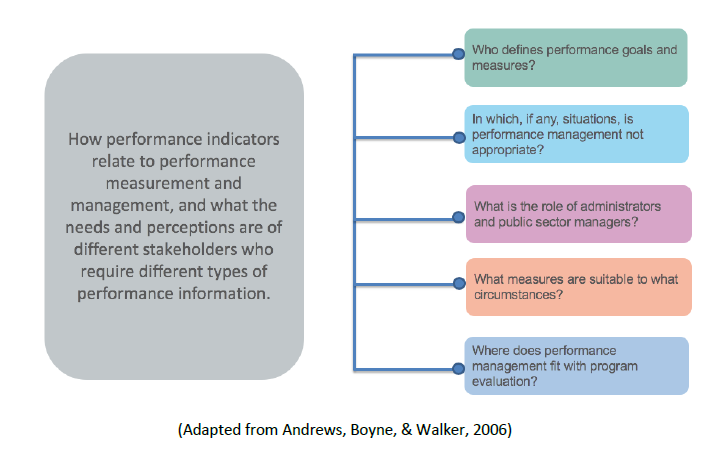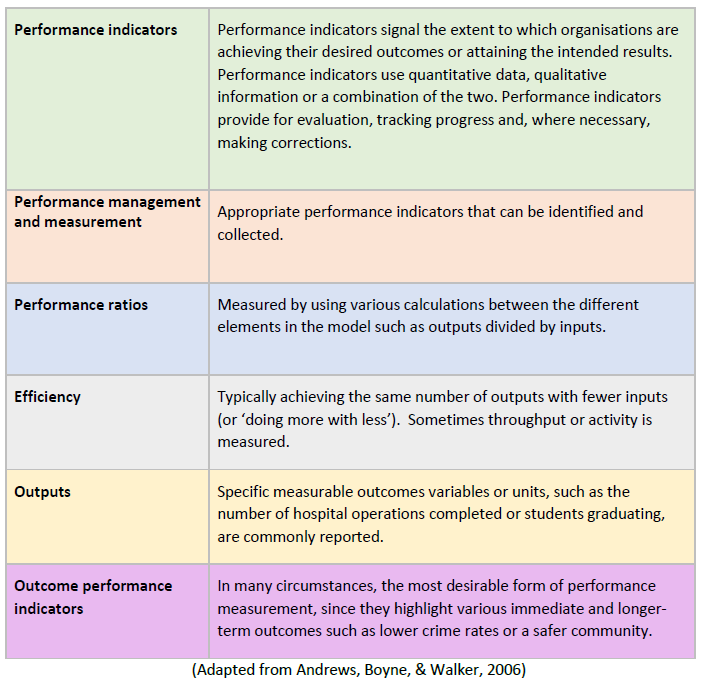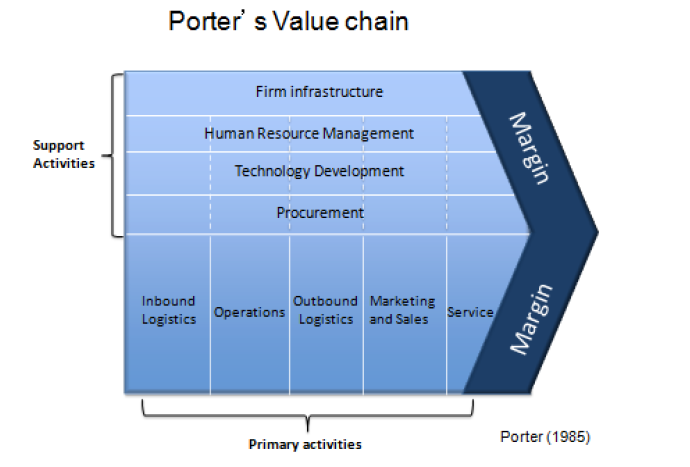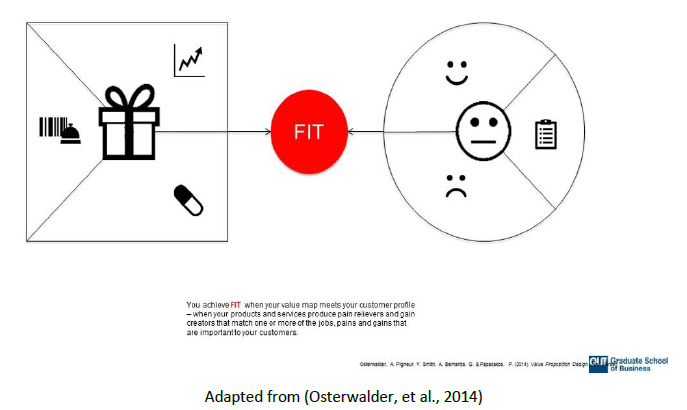Module 6: Measuring Performance Outcomes
Topic 6.1: Designing and Building Performance and Management Systems
Module 6, the final module of Unit Four, focuses on linking the various concepts, practices and processes that underpin success in “Managing Operations for Outcomes”. As you set out to complete your Workplace Project, this module helps you to make sense of, and bring together, your learning journey. It is designed to help you build sustainability into your ‘Managing Operations for Outcomes’ mindset and tactics. Most importantly, the module will help to guide and continue to develop your overall thinking about organisational performance in the twenty-first century.
Evaluating the strategy execution
In the context of your organisation, the purpose of your work is to deliver outcomes to relevant, significant and designated stakeholders. The guiding principles are to do this within the efficiency, effectiveness, governance, vision frameworks and other goals specified by public sector value and the organisational context.
In the workplace this is fostered by maximising and maintaining individual, team, program, and organisational performance. Typically, you would be guided by the overall strategy and strategic objectives of the agency, department, section and the specific desired outcomes. Thus, your role is to deliver on those strategic imperatives.
In this unit, and specifically in this module, we focus on evaluation of the overall system and its performance, not specifically on the evaluation of the individuals involved in the delivery process.
To achieve this, as public sector managers, you have the tools and processes of strategic and operational management. Connections between people resources and performance management is important because public sector managers need to be able to connect the actions they take in leading the performance management systems to the wider system where the aim is to improve the organisation’s and government’s performance.
Managers need to be able to assist individuals to see this link by establishing a line of sight. This link may contribute to motivation or job satisfaction since meaningful work is vital for job satisfaction.
So, who defines success and performance parameters in your context? Clearly there are many different levels of analysis and data systems that are available for organisational performance management. Be mindful of these systems as you complete this module.
We will consider how performance indicators relate to performance measurement and management, and what the needs and perceptions are of different stakeholders who require different types of performance information.
To address these considerations, here are some guiding questions for you to consider (Andrews, Boyne, & Walker, 2006):
Figure 6.1 Performance Indicators[1]
Overall, performance management relates to accountability, governance and compliance. Performance management therefore forms part of the system in which responsibility and authority for outcomes are devolved to public sector managers. However, before performance can be managed, it is important to understand what the term means.
Table 6.1 Performance Indicators, measurement, ratios, efficiency and outputs
Overall then, we can measure anything and everything…input, processes, outputs, outcomes, hindsight, insight, foresight, oversight, catalytic measures. The question thus becomes – what is meaningful in a given context, and what will best serve the desire to deliver ‘valued’ public sector value?
Once the performance system has been designed and specified. It needs to be applied. Given that the overall purpose is to deliver value, how might we measure and evaluate value. There are two states of evaluation – concept evaluation, and process evaluation (Williams & Lewis, 2008)[2].
Assuming that the concept passes the ‘useful, decent, acceptable, positive and profitable’ test – that is concept evaluation – the next stage is process evaluation – addressing the question of whether we are going about delivering value in the most appropriate manner. (Meynhardt et al, 2014)[3].
Process Evaluation
Process evaluation as an evaluation of the value delivery mechanisms that organisations use to deliver on their purpose and objectives. One way to evaluate a delivery mechanism is to apply The Value Chain concept model (Porter, 1985)[4]. The Value Chain concept (see Figure 6.2 below) is a model which describes the categories of activities within an organisation or department which create and deliver a product or service, and explains how organisational activities contribute to a strategy (Johnson, et al., 2014)[5].
The model helps an organisation and its managers to understand the linkages to see where value is added, and how the activities are integrated to best advantage. Note there are both primary and support activities, which the organisation can refine and develop to form an overall set of processes that enable a highly effective and (ideally) unique delivery system. Thus, we would consider this to be a process evaluation model.
Figure 6.2: The Generic Value Chain Model within an Organisation
A second and more specific way to explore process evaluation is to apply the Service Blueprinting technique as a diagnostic tool to a specific process or service model (see Module 4). For example, the moment of truth and pain point indicators, linked to customer actions, are an excellent way to explore for example whether a service system is designed to effectively deliver on provider and customer expectations.
A third approach is to utilise the strategic triangle concept we introduced in Module 1 (Moore & Khagram, 2004)[6]. The adapted questions from this approach are:
- Does the model or strategy deliver the public value the organisation is seeking to produce?
- Will the model or strategy achieve the goal of acquiring the legitimacy and support from the authorisers within the system who would allow the managers to take action and procure the necessary resources to sustain the effort to create the proposed value?
- Does the organisation have the operational capabilities to deliver on the proposal to achieve the desired results?
Now that you have options for evaluating the process, we would recommend that those seeking to evaluate the proposed or existing model or strategy would also consider using a governance lens to make a final assessment. Please refer to Module 1 Topic 5 as a reminder of the five factors of governance and compliance; in particular the Strategy, Culture, Relations, and Compliance and Accountability factors will be relevant here.
Required
30 mins
- Considering your Workplace Project, attempt to apply the Value Chain model, by identifying both the primary and support activities.
- How are the value of these activities communicated to internal stakeholders, and to relevant external parties?
- Think of a specific element of the Service delivery inherent or proposed in your Project. Attempt to ‘blueprint’ a key element of the service. Use the point point/moment of truth concepts to highlight significant elements of the process, paying particular attention to the end recipient of the benefits of the Workplace Project initiative.
- Consider your Workplace project in relation to overall governance.
- How would you communicate that your Project appropriately engages the principles of governance in your jurisdiction?
Outcome Evaluation
Following on from a concept and a process evaluation, the final stage would be an outcome evaluation system, which should be designed to enable relevant participants and stakeholders to measure and appreciate public value outcomes. We suggest that you explore the following approaches, and also investigate any evaluation processes with which you are familiar, or have observed in your career. Here we propose that you revisit the value proposition concepts from the business model canvas introduced in GSZ633 and further explored in this unit.
Value Proposition Performance
One approach is to identify, and quantify, the value proposition of an initiative or project. We explored the value proposition in Module 3 in the context of the business model canvas.
A stated value proposition, within a business model canvas, is an easy concept to see, share, understand, and use to action and evaluate business models and strategy from a public sector manager perspective. The challenge of course is to carefully specify the objective characteristics of a value proposition’ from both the organisation’s and the recipient’s perspectives.
The suggestion is to build a ‘value Proposition and fit Map’ (Osterwalder, et al., 2014) that links organisational actions to specific outcomes for the specified user. by linking this with a business model canvas, the value chain model, the Watkins (2013)[7] 30:60:90 frame, and final the Rockefeller 5+1 Priorities (Harnish, 2002). this approach usually is presented as a short and highly visual set of graphics, so that all participants and stakeholders can see the promise, the benefits, the consequences and the timeframe.
Figure 6.3 Value Proposition and Fit Map
Regardless of the outcome evaluation tools that you apply, governance should be top of mind. Indeed, the performance factor of governance is a relevant lens to apply in any outcome evaluation system.
So, to wrap up this section, continue to focus on developing a suitable and flexible suite of tools and processes that are context and public value oriented for your business model and strategy evaluation.
Recommended
90 mins
This reading (Johnson, Whittington, Scholes, Angwin, & Regner, 2014)[8] highlights a variety of performance measures, and performance comparisons – what it is that you are measuring against – be it targets, trends over time, or chosen comparison organisations. The reading is largely based around the discussion of the Suitability, Acceptability, Feasibility criteria (Johnson, et al., 2014, p272), which is as relevant to the public sector as it is to the corporate context.
As you work through the reading, have in mind your Workplace Project, and consider how you will incorporate the relevant concepts into evaluating your project. This is especially useful for your final report.
Johnson, G., et al. (2014). Chapter 11: Evaluating Strategies. In Exploring Strategy (pp.366 – 401). UK: Pearson. QUT Readings (New window)
Please read only chapter 11.
In this reading, you can explore a sample jurisdictional guide to performance management.
For your Workplace Project you can identify and consider What are the similarities and differences between your context, and the broader system described in the document above?
Apply the Suitability, Acceptability, Feasibility criteria (Johnson, et al., 2014, p. 272) criteria. What do you notice?
These activities may be useful to guide you in your Workplace Project, especially in your final report.
The Balance Scorecard (BSC)
The Balanced Scorecard (BSC) (Kaplan & Norton, 1996)[9] is a well-known and widely used strategy and performance management tool. Almost immediately it gained favour with organisations that sought holistic, forward-looking approaches to strategic management. The BSC has gained wide acceptance as an important strategy tool with the scope for enhancing organisational outcomes (Hendricks, Menor, & Wiedman, 2004)[10] and has been adapted for government and non-profit sectors.
The concept comes from the idea of balance – between financial and operational concerns, and between hard and soft data; and from the Scorecard concept–measuring and enhancing performance throughout an organisation, with specific processes to take organisational performance building approaches right through to individual performance management (Kaplan & Norton, 1992).
For public sector agencies there are benefits from using a BSC methodology.
These include:
- preventing information overload by limiting the number of measures used
- balancing time perspectives – both current and future drivers of performance are addressed
- providing managers with complex information at a glance
- ensuring that managers are managing crucial variables – not just the financial or the ‘easy’ ones, nor too many.
One argument for its adoption is that the BSC also promotes ethical processes because it encourages a more rounded view besides just focusing on the cost and resources (and financial) measures. As a note of caution however, it is important for you to assess the relative benefits and disadvantages of such tools.
For more details around the adaptation of the BSC for the government and not-for-profit sector, see the following publication:
Niven, P. R. (2008). Chapter 8: Performance Measures, Targets, and Initiatives & Chapter 9: Creating Alignment by Cascading the Balanced Scorecard. In Balanced Scorecard: Step-By-Step for Government and Nonprofit Agencies (pp. 209–275). John Wiley & Sons, Incorporated
Read only chapter 8 and 9.
Consider the Performance and Development Framework Guide relevant to your state or territory.
- How have you experienced being measured in the workplace?
- Did you feel this measurement accurately reflected your performance?
- What criteria do you consider to be optimal to motivate performance and development?
There are criticisms of the Balanced Score Card approach.
- What are these?
- How do you deal with these criticisms?
- How relevant are these in your workplace?
- Andrews, R., Boyne, G. A., & Walker, R. M. (2006). Strategy Content and Organizational Performance: An Empirical Analysis. Public Administration Analysis, 66(1), 52-63. ↵
- Williams, W., & Lewis, D. (2008). Strategic management tools and public sector management: The challenge of context specificity. Public management review, 10(5), 653-671. ↵
- Meynhardt, T., Gomez, P., & Schweizer, M.T. (2014). The Public Value Scorecard: What makes an organization valuable to society? Performance, 6(1), 1-8. ↵
- Porter, M. E. (1985). Competitive Advantage: Creating and Sustaining Superior Performance. New York: Simon and Schuster. ↵
- Johnson, G., et al. (2014). Chapter 11: Evaluating Strategies. In Exploring Strategy (pp.366 - 401). UK: Pearson. QUT Readings ↵
- Moore, M. & Khagram, S. (2004). On Creating Public Value: What Business Might Learn from Government about Strategic Management (Corporate Social Responsibility Working Paper 3). Cambridge, MA: John F. Kennedy School of Government Responsibility, Harvard University. ↵
- Watkins, D (2013) The First 90 Days: Proven Strategies for Getting Up to Speed Faster and Smarter. Harvard Business Review Press; Updated, Expanded edition (May 14, 2013) ↵
- Johnson, G., et al. (2014). Chapter 11: Evaluating Strategies. In Exploring Strategy (pp.366 - 401). UK: Pearson. QUT Readings ↵
- Kaplan, R. S., & Norton, D. P. (1996). Linking the balanced scorecard to strategy. California management review, 39(1), 53-79. ↵
- Hendricks, K., Menor, L., Wiedman, C., & Richardson, S. (2004). The Balanced Scorecard: To adopt or not to adopt. Ivey Business Journal, 69(2), 1-7. ↵





